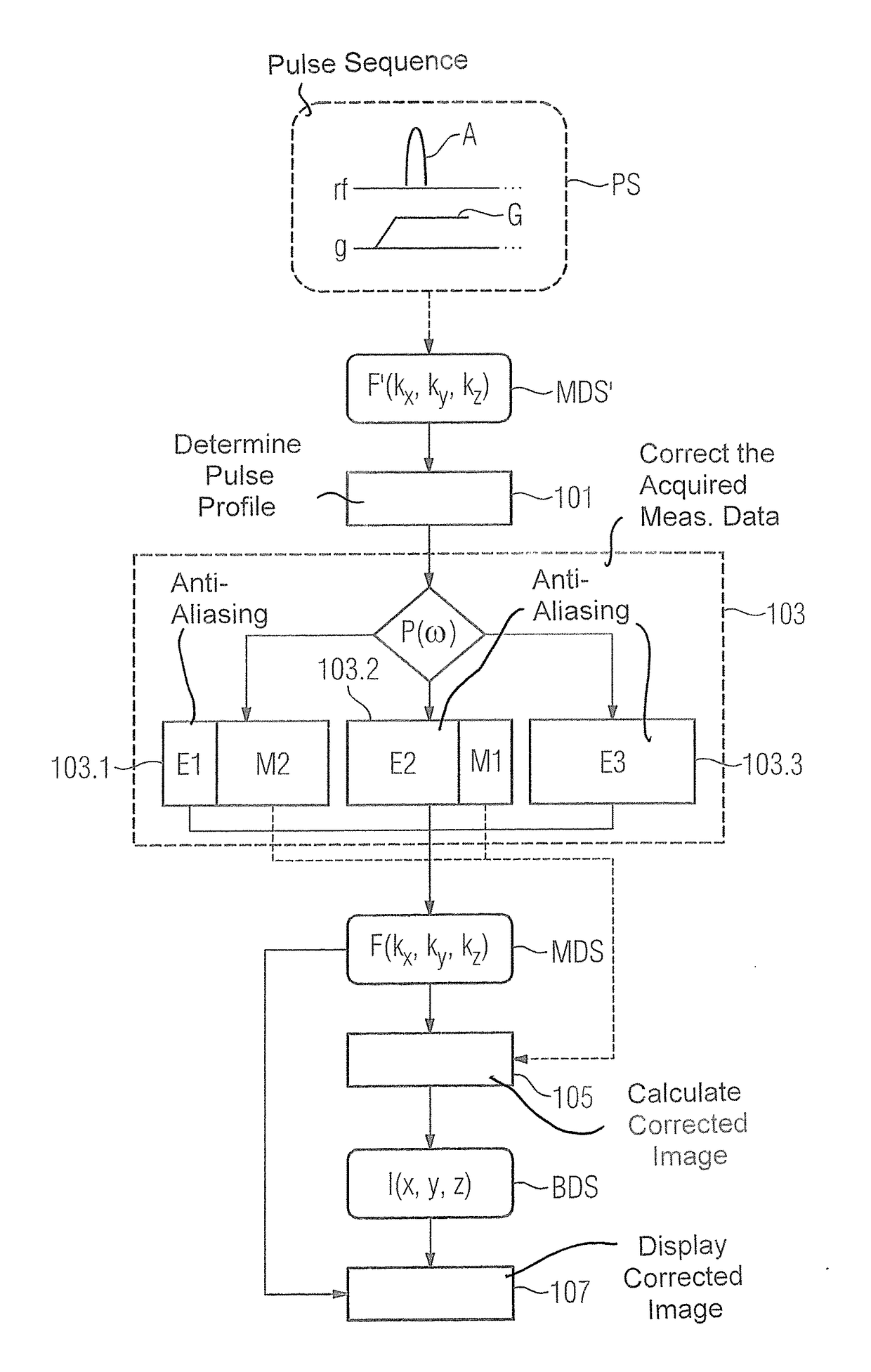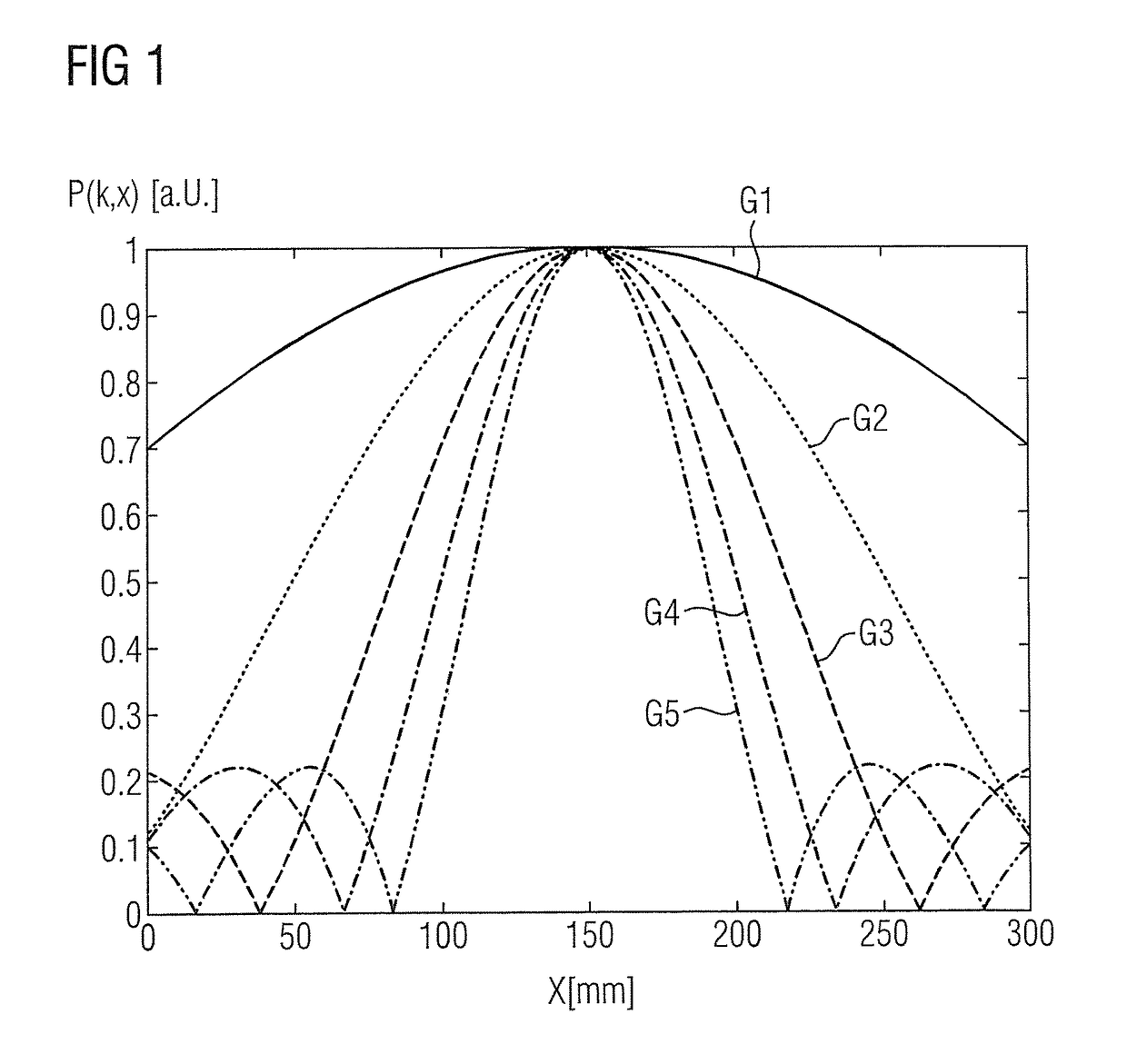Method and magnetic resonance apparatus to correct magnetic resonance measurement data
a magnetic resonance and measurement data technology, applied in the field of correction of measurement data, can solve the problems of requiring particularly fast gradient switching, uncomfortable for patients to be examined, and noisy echo-based mr examination, and achieve the effect of limiting mr measurement and correcting artifacts
- Summary
- Abstract
- Description
- Claims
- Application Information
AI Technical Summary
Benefits of technology
Problems solved by technology
Method used
Image
Examples
Embodiment Construction
[0052]FIG. 2 is a schematic flowchart of an embodiment of the method according to the invention. Measurement data MDS′ that are acquired by means of a pulse sequence PS (in which gradients G are activated simultaneously during the radiation of at least one non-selective excitation pulse A) along Cartesian lines in k-space (in particular in the kx-direction as a readout direction) are initially loaded into a computer, for example a control unit of a magnetic resonance system. Due to the superposition of the excitation pulse A with the simultaneously switched gradients G, the acquired measurement data MDS′ are located in distorted k-space F′(kx,ky,kz).
[0053]In a step 101, a pulse profile P(ω) of an excitation pulse A used by the pulse sequence PS is determined. As already noted, the excitation profile P(ω) of an excitation pulse A corresponds essentially to the Fourier transformation of the pulse shape of the excitation pulse A in time period p(t). For example, square excitation pulse...
PUM
 Login to View More
Login to View More Abstract
Description
Claims
Application Information
 Login to View More
Login to View More - R&D
- Intellectual Property
- Life Sciences
- Materials
- Tech Scout
- Unparalleled Data Quality
- Higher Quality Content
- 60% Fewer Hallucinations
Browse by: Latest US Patents, China's latest patents, Technical Efficacy Thesaurus, Application Domain, Technology Topic, Popular Technical Reports.
© 2025 PatSnap. All rights reserved.Legal|Privacy policy|Modern Slavery Act Transparency Statement|Sitemap|About US| Contact US: help@patsnap.com



